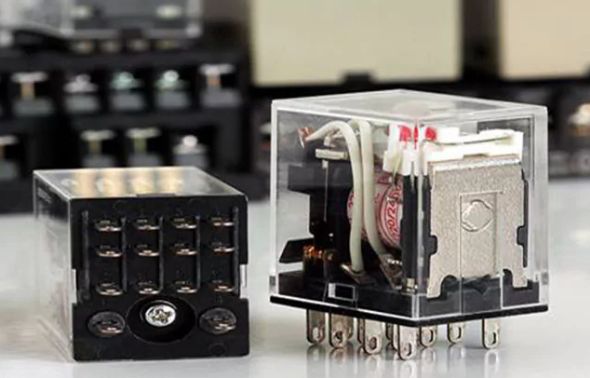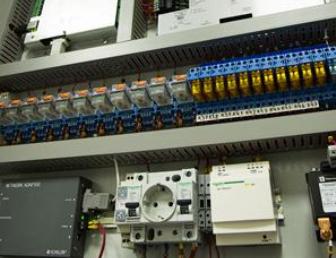Categories: Novice electricians, Industrial electrician
Number of views: 145461
Comments on the article: 8
Intermediate relays: purpose, where they are applied and how they are chosen
The term "intermediate relays" most often means electromagnetic relays, which are used as so-called auxiliary relays, playing not the main, but very important role in the control circuits of various technological installations, machines, complexes.
Today, the word "relay" is understood not only as electromagnetic relays, which they were originally, a relay can now be both electronic and electromagnetic. One way or another, a relay is a key designed to open or close an electrical circuit for one purpose or another, when certain circuit parameters take specified values, or when part of a technical device is in a given state, for example, as a result of external influences on it.

Currently, the market offers a fairly wide range of intermediate relays. It is possible to select an intermediate relay both by price category and by the property of the tasks being solved. The most common production firms Finder, Phoenix, ABB, Schneider electric. From domestic, we indicate the relay type RPL, RPU-2M, RP, REP, for example.
In a simplified form, the intermediate relay is an electromagnetic coil with a core that can be connected either to direct or alternating current (these are the main types of intermediate relays), when a voltage appears on it, an electromagnetic force attracts the armature, which, in turn, closes the movable contacts ( usually mounted on it) with fixed mounted on the body. Thus locking or unlocking contact groups. And already these contacts play a role in the control circuits, that is, they include alarm or protection circuits, open (close) the power circuit of the coil of the magnetic motor starter (see - wiring diagrams of magnetic starters) There may be plenty of options.

Intermediate relay RPU-2M
One intermediate relay can have several groups of NO contacts and several groups of NO contacts. The need for certain technical characteristics of this relay arises from the tasks facing the designer.
The main function of the intermediate relays is the multiplication of contacts in the control circuits. For example, in the water pump motor control circuit, this relay has the following functions - after pressing the “Start” button, one pair of make contacts will close the alarm circuit showing the pump to the operator, the other pair will close the power circuit of the magnetic starter coil, the starter contactor will trip and start the pump motor . In this case, a pair of NC contacts will open the circuit of the reverse operation of the electric motor, which will prevent the power circuit from shorting.
In addition, intermediate relays can be used in electrical circuits to amplify control signals. So, for example, in the circuit of an electric heating installation, the input of the intermediate relay receives a signal from the thermal control device, and already with its contacts the relay switches the coil of the magnetic starter, which controls the supply of voltage to the heating elements of the furnace.
A weak signal from the thermal control device could not turn on the starter coil. In order for the circuit to work, the signal is amplified through an intermediate relay, i.e. the relay is triggered by a relatively weak current, but turns on electrical circuits through which a significantly higher current flows.

In fact, the relay itself is a miniature electromagnetic starter, but it cannot fully replace it in view of small switched currents. Simply put, the long-term permissible current of contact groups usually does not exceed 10A. What is more than enough for control circuits.Clarity of operation of the relay provides a breaking spring.
Intermediate relays in the control cabinet
The choice of an intermediate relay is based on its technical characteristics. Such as supply voltage (V), power consumption (W), switching current (A), long-term permissible current of contacts (A), the number and type of contact contacts and overall dimensions.
Do not forget about the operating conditions: operating temperature range, vibration, dust concentration, explosive atmosphere, air humidity, etc. p. For each operating condition, it is possible and necessary to select the necessary type of relay.
It must be remembered that each element of the protection circuit makes its own error in this circuit. So the intermediate relay has a certain response time (that is, it introduces a deceleration in the protection circuit), which must be taken into account. Typically, the response time of the relay reaches 0.1 seconds. But there are also high-speed ones, the maximum response time of which reaches 0.02 seconds.
An example of using intermediate relays:

Electric circuit diagram of the electrode water heater (intermediate relays - KV1, Kv2 and KV3, electromagnetic starter - KM).
Write in the comments why these three intermediate relays are needed in the water heater circuit?
See also at bgv.electricianexp.com
:

